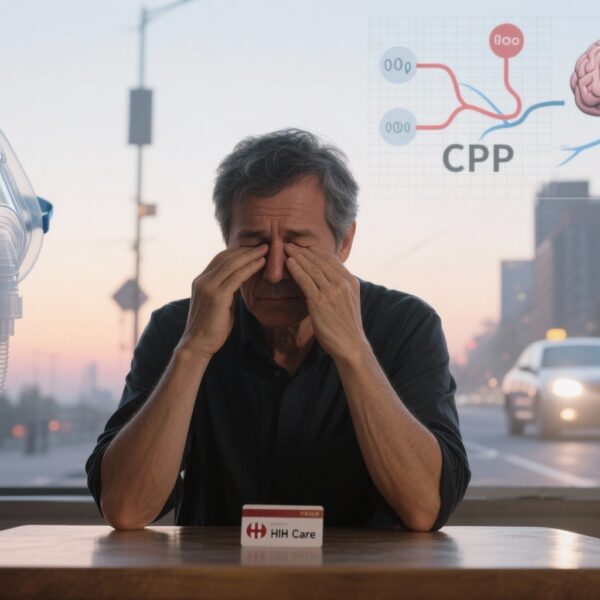Introduction: The Hidden Epidemic of Sleep and Mood Disorders in HIV
Nearly 40 million people worldwide live with HIV, a condition that has transformed from a fatal infection into a manageable chronic disease thanks to advances in antiretroviral therapy (ART). However, beyond viral suppression and immune restoration, many individuals face deep, persistent challenges—especially sleep disorders and emotional distress—that severely impact quality of life. Recent studies report that up to 70% of HIV-infected individuals experience obstructive sleep apnea (OSA), significantly higher than the estimated global prevalence of 1 billion people affected by sleep apnea overall. Sleep disruptions not only degrade daily functioning but also create a vicious cycle with psychiatric symptoms such as depression and anxiety, which themselves worsen sleep. This article explores the complex interplay between HIV infection, sleep disturbances, and mood disorders, diving into emerging evidence on how the wakefulness-promoting agent modafinil can become a game changer in this clinical arena.
Sleep Disorders in People Living with HIV: Scope and Mechanisms
Sleep disturbances are among the most common comorbidities seen in HIV patients, recognized as far back as the early days of the epidemic. According to a 2025 review published in The Lancet HIV, sleep disorders including insomnia and obstructive sleep apnea affect a large proportion of the HIV-positive population. Large cohort studies reveal that individuals over 50 years old with HIV have a 5.3-fold higher risk of insomnia compared to matched controls. Women with HIV also report insomnia symptoms at a rate 17% higher than their HIV-negative counterparts. Although insomnia dominates attention, OSA—a condition characterized by repeated upper airway obstruction during sleep—has notably high prevalence in HIV patients, with mild-to-moderate cases affecting up to 70% as assessed by polysomnography.
The multifactorial genesis of these issues includes:
- Direct viral effects: HIV crosses the blood-brain barrier and disrupts neural glial cell functions, interfering with critical brain regions involved in sleep regulation.
- Persistent immune activation: Chronic inflammation persists despite effective ART, altering sleep architecture and promoting fatigue.
- ART drug side effects: Medications such as efavirenz are known to impair sleep quality and exacerbate insomnia.
- Psychosocial stressors: Stigma, anxiety, and depression worsen sleep parameters, generating a complex feedback loop.
The Vicious Cycle of Sleep Disorders and Mood Problems
Psychiatric symptoms, particularly depression, are significantly elevated in HIV-infected individuals, with prevalence rates ranging from 28% to 62%. Depression in this group is often characterized by profound fatigue, anhedonia (loss of pleasure), and cognitive slowing. Poor sleep quality is one of the strongest predictors of depression severity, and reciprocally, depression worsens sleep, creating a self-perpetuating cycle detrimental to patient wellbeing.
This interconnectedness demands treatment strategies that simultaneously target sleep disorders and mood symptoms. Unfortunately, conventional antidepressants may exacerbate daytime sleepiness or interact adversely with ART, calling for safer, more targeted approaches.
Obstructive Sleep Apnea and Daytime Sleepiness: Underappreciated Risks
Obstructive sleep apnea is more than just nocturnal snoring; it triggers repetitive airflow blockage, resulting in fragmented sleep and intermittent hypoxia. As a result, many patients suffer from excessive daytime sleepiness (EDS). Estimates indicate that 40.5% to 58% of OSA patients experience EDS severe enough to impair daily activities.
For people with HIV, additional factors such as systemic inflammation and ART-induced weight gain potentiate these risks. EDS increases dangers such as sudden sleep episodes during conversations, meals, or even driving, presenting serious safety hazards.
While continuous positive airway pressure (CPAP) remains the cornerstone treatment for OSA, poor adherence limits its effectiveness—half of patients struggle with regular use. Furthermore, even among CPAP users, residual daytime sleepiness may persist, necessitating adjunctive pharmacologic interventions.
Modafinil: A Multi-Functional Ally in Managing Sleep and Mood Disorders
Modafinil is a novel central nervous system stimulant distinct from classical stimulants, acting primarily through inhibition of dopamine transporters (DAT) to render stable, prolonged wakefulness without excessive stimulation or addictive potential.
1. Enhancing Daytime Wakefulness
Clinical trials, including a study published in the Chinese Journal of New Drugs and Clinical Remedies, show that modafinil effectively reduces daytime sleepiness among OSA patients beyond the benefits of placebo, exhibiting excellent safety and tolerability.
In the HIV population, modafinil can dramatically improve EDS caused by untreated or residual OSA and by ART side effects, restoring vital daytime activities such as work performance, social interaction, and safe driving. For example, “Mark,” a 52-year-old HIV-positive man experiencing overwhelming daytime fatigue despite CPAP therapy, found that modafinil enabled him to regain alertness and confidence needed to resume his daily employment.
2. Alleviating Depressive Symptoms
A 2020 meta-analysis in JAMA Psychiatry reviewing over 1200 individuals revealed that modafinil serves as an effective augmentation agent for antidepressant therapies, particularly alleviating fatigue, hypersomnia, and cognitive slowing.
Modafinil raises dopamine and norepinephrine levels to counteract anhedonia, psychomotor retardation, and low energy—hallmarks of depression that traditional antidepressants often fail to address. This benefit is crucial for HIV-positive patients facing chronic disease burdens and social stigmatization, who often endure debilitating mental fatigue and emotional numbness.
Simultaneously, by normalizing the sleep-wake cycle, modafinil indirectly enhances mood and daytime functioning, offering a potent means to break the “sleep disturbance–depression” feedback loop.
3. Supporting Cognitive Function
Some HIV patients endure “brain fog,” marked by reduced concentration, memory lapses, and slowed thinking—possibly due to neuroinflammation and direct viral effects. Studies demonstrate that modafinil improves executive function, working memory, sustained attention, and cognitive flexibility.
For people living with HIV, this means improved mental clarity and decision-making ability. Tasks demanding high cognitive load, such as driving, work duties, or learning new skills, become more manageable, ultimately enhancing social function and quality of life.
While research on modafinil’s cognitive benefits in neurodegenerative disorders is still emerging, its efficacy in healthy individuals and other patient groups is promising.
Clinical Use of Modafinil in HIV Patients: Practical Considerations
Modafinil’s multifaceted benefits make it well-suited for several clinical scenarios in HIV care:
- Daytime sleepiness from OSA: As first-line pharmacotherapy adjunctive to CPAP, modafinil can significantly boost daytime alertness even when sleep seems sufficient at night.
- Depression with fatigue and hypersomnia: As an augmentation agent adding to antidepressant regimens, particularly effective when tiredness and daytime sleepiness predominate.
- Shift work or circadian rhythm disturbances: To improve synchronization of sleep-wake cycles and daytime function.
- Cognitive impairment: Helping offset attention and memory declines related to HIV-associated neurocognitive disorders.
The safety profile is reassuring: common side effects include headache, nausea, anxiety, and insomnia, generally mild and reversible. Importantly, there is no evidence of addictive potential or significant drug interactions with ART.
Conclusion: Toward Integrated Care Addressing Sleep and Mood in HIV
Sleep and emotional disturbances represent critical, often underrecognized burdens for people living with HIV, directly affecting daily functioning and long-term health outcomes. Modafinil offers a unique, multi-targeted therapeutic option to tackle daytime sleepiness, depression, and cognitive dysfunction simultaneously. By integrating modafinil into comprehensive HIV care, clinicians can help patients transition from mere survival to thriving, dramatically improving quality of life.
Ongoing research will further clarify optimal dosing, long-term safety, and combined approaches with behavioral and respiratory therapies. As clinical awareness grows, modafinil may well become a cornerstone in addressing the complex web of sleep and mood disorders in this vulnerable population.
References
1. Sukumaran L, et al. Understanding and managing disordered sleep in people with HIV. Lancet HIV. 2025.
2. Hoare J, et al. Global Systematic Review of Common Mental Health Disorders in Adults Living with HIV. Curr HIV/AIDS Rep. 2021.
3. Modafinil augmentation for treatment-resistant depression: a meta-analysis of randomized controlled trials. JAMA Psychiatry. 2020;77(6):575-590.
4. Weaver TE, et al. Modafinil for excessive sleepiness associated with obstructive sleep apnea syndrome: a randomized trial. JAMA. 2007;297(7):760-767.
5. Paterson JL, et al. The neuropsychiatric profile of HIV infection: Emerging approaches for treatment. Curr Opin HIV AIDS. 2017;12(5):445-454.
—



